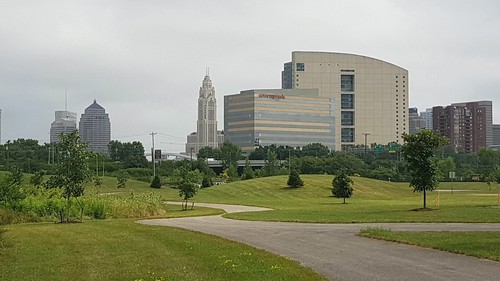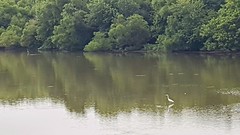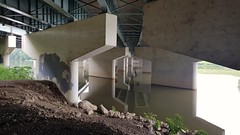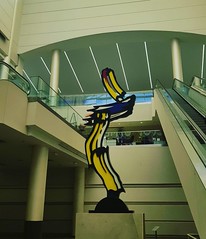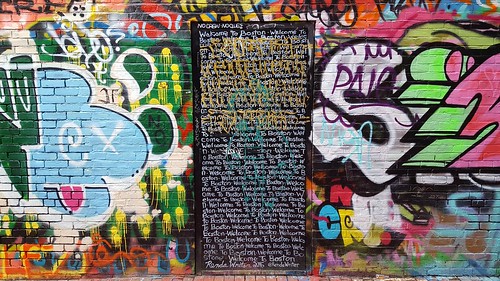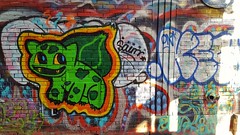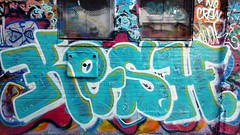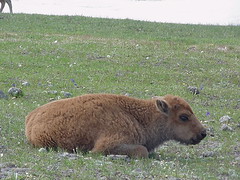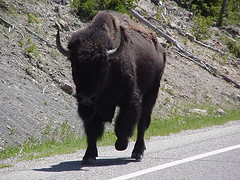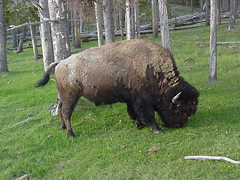
One morning last month while I was standing at the kitchen sink doing dishes, I saw a female ruby-throated hummingbird hovering around our backyard bird-feeder, confused, wondering why a red feeder should hold birdseed rather than sugar water. Hummingbirds are lightning-fast and iridescent, so it always feels like an unexpected gift to see one: a sudden spark of motion and color that zips into view, pauses, then darts away, an elusive apparition that already seems like a memory even before it’s gone.

It still seems strange to watch our backyard bird-bath and feeder while doing the morning dishes rather than spending that time watching for Reggie. It’s been over five months since Reggie died, and my morning ritual of watching Reggie in our backyard dog-pen while I did dishes before our morning walk—my glances to make sure he wasn’t pacing and whining at the gate, or to check that he hadn’t fallen into a tangled heap somewhere, unable to get up—was such a staple of Reggie’s last year, it seems strange to no longer do it.

I think of Reggie most often in the mornings when I do dishes, as there are many reminders of him then: not just the dog-pen in easy sight from the kitchen window, but also the digital photo frames that show a random history of J’s and my life together, including many photos of Reggie in various stages of his prime, middle age, and decline: images appearing occasionally and at random, as if reminding me of experiences I can never forget.

There are also all the memories I have of standing at the sink in Reggie’s final months and weeping as I watched for him—mornings when I knew his end was near and that someday I’d look back on those hours as precious, simply because back then, Reggie was alive. “Anticipatory grief” is the official term for this process of beginning to grieve before you’ve actually lost something, as if grief were a task you could get a head start on: a full, heaping serving you could eat bite by bite, over time, rather than swallowing in one choking gulp. Regardless of when you start grieving, whether your experience of loss is gradual and anticipated or sudden and surprising, you can’t digest it beforehand: when the actual moment of “goodbye” arrives, there’s little your anticipation can do to prepare you for what is to come.

These predictably bittersweet morning moments at the kitchen sink aren’t the only ones when I remember Reggie, however, as his memory comes to me, unbidden, at random, unforeseen times. Sometimes it’s the sight of a dog who looks a bit like Reggie—one of the dogs who barks behind a chain link fence beside my parents’ house in Columbus, Ohio, for instance, or a Reggie-colored dog walking with its owner on a wooded path. In each case, there is something about This Dog that reminds me of That One, and the spark of recognition is undeniable, my heart hearkening with a start: “Oh!” It’s often a recognition only I see: the other dog doesn’t really look like Reggie, but an awareness of resemblance appears because such a large part of my heart still looks for Reggie, expecting him naturally to be in any of the places where I am.

A month or so ago, for example, a friend and I walked around the lake at Wellesley College on a beautiful Sunday afternoon when countless families and dog-walkers were enjoying the sunshine, including one woman who sat reading in a beach chair beside an elderly keeshond who reminded me so much of Reggie, I could barely speak. This dog was sprawled comfortably on the grass while the woman read, resting and showing no desire to go wading into a lake where every other passing dog had hurled himself with great, splashing enthusiasm. This dog was midsized, gray, and irrepressibly fluffy, lolling with such an expression of quiet happiness, you’d think there was no greater joy in the world than simply lying in the grass next to a lake on a sunny, late-summer Sunday afternoon.

As the woman packed her things to leave, the dog still lay there quietly, happily indifferent, refusing to heed her calls to come, get up, and follow, ultimately tugging back on the leash when the woman tugged to stir him. It was exactly something Reggie would have done—a mischievous stripe of stubbornness tempered by the mellowness of age. There was no anger or aggression between the woman and dog, just a quiet refusal on the dog’s part, as he refused to be tamed even in old age. When the dog eventually stood up, his motions were slow and obviously achy, a second stab of recognition. Creaky and arthritic, the fluffy gray dog got up and slowly hobbled away, shadowing the woman’s steps in a manner that was so eerily reminiscent of Reggie’s arthritic gait, it might as well have been him, reincarnate.

“Enjoy him while you have him,” I wanted to shout, but I didn’t because the woman didn’t need my exhortations: she already knew. I could tell this in the way she’d knelt to the ground to kiss the dog on his snout, ruffling his furry mane, before urging him to his feet. This too was something I did, something that owners of old dogs do universally, the world over, I think. It’s a universal language that needs no translation.

You’ve surely seen the famous photo that made the rounds this summer of a man with a ponytail wading up to his neck in Lake Superior, his elderly shepherd mix floating beside him, the dog’s face resting with a blissful expression on the man’s chest. That dog, too, reminded me of Reggie in terms of his size and general shape; the blissful expression is one I recognized, as one of an old, arthritic dog finding a moment of peace.

When I first read about the man and his 18-year-old, arthritic dog, it brought grief over Reggie’s passing back as if no time had passed at all. Grief is a fruit that remains perpetually fresh, preserved in some hidden cellar of the soul. Seeing the photo, I wept as if Reggie had died only yesterday—wept because I remember how desperately I looked for ways to make him comfortable in his final months, and wept because I recognized that expression of trusting comfort that marked those elusive moments when I had succeeded. That blissful look, I think, is what Reggie had on his face when he died with his head in my lap, at peace at last: a look I would have done anything in my power to elicit.

There is another form of recognition that is even stranger—even more tenuous, and even more powerful—than these encounters with dogs who remind me of Reggie. For at random, unpredictable times, I’ll see things that are entirely unlike Reggie that nevertheless remind me of him—a bright eyed, inquisitive toddler exploring the world just beyond his mother’s reach, or an elderly man doddering on slow, achy legs down a grocery store aisle, or a friend’s hushed story of how his mother died while he sat watch over her, alone. These people are not like Reggie—it’s silly and even obscene to compare them—but there is this same sudden spark of recognition: “Oh, yes. This life too is precious, beloved, and destined to pass.”

These lives, too, are like sudden hummingbirds which zoom into the receptive spaces of our soul, brightening everything with the quickening glint of their unanticipated coming, pausing, then flitting away: beautiful, enlivening, and ultimately ephemeral.
Click here for more photos from the Columbus Zoo, from last month’s trip to visit family in Ohio. Enjoy!
